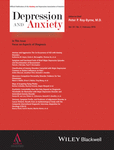PSYCHIATRIC COMORBIDITY DOES NOT ONLY DEPEND ON DIAGNOSTIC THRESHOLDS: AN ILLUSTRATION WITH MAJOR DEPRESSIVE DISORDER AND GENERALIZED ANXIETY DISORDER
Contract grant sponsor LifeLines Biobank Initiative: FES (Fonds Economische Structuurversterking); SNN (Samenwerkingsverband Noord Nederland); REP (Ruimtelijk Economisch Programma); grant sponsor Peter de Jonge: Netherlands Organization for Scientific Research (NWO—ZonMW); Contract grant number: 91812607; grant sponsor Jan-Willem Romeijn: Netherlands Organization for Scientific Research (NWO—GW) Contract grant number 016114354.
Abstract
Background
High rates of psychiatric comorbidity are subject of debate: To what extent do they depend on classification choices such as diagnostic thresholds? This paper investigates the influence of different thresholds on rates of comorbidity between major depressive disorder (MDD) and generalized anxiety disorder (GAD).
Methods
Point prevalence of comorbidity between MDD and GAD was measured in 74,092 subjects from the general population (LifeLines) according to Diagnostic and Statistical Manual of Mental Disorders (DSM-IV-TR) criteria. Comorbidity rates were compared for different thresholds by varying the number of necessary criteria from ≥1 to all nine symptoms for MDD, and from ≥1 to all seven symptoms for GAD.
Results
According to DSM thresholds, 0.86% had MDD only, 2.96% GAD only, and 1.14% both MDD and GAD (odds ratio (OR) 42.6). Lower thresholds for MDD led to higher rates of comorbidity (1.44% for ≥4 of nine MDD symptoms, OR 34.4), whereas lower thresholds for GAD hardly influenced comorbidity (1.16% for ≥3 of seven GAD symptoms, OR 38.8). Specific patterns in the distribution of symptoms within the population explained this finding: 37.3% of subjects with core criteria of MDD and GAD reported subthreshold MDD symptoms, whereas only 7.6% reported subthreshold GAD symptoms.
Conclusions
Lower thresholds for MDD increased comorbidity with GAD, but not vice versa, owing to specific symptom patterns in the population. Generally, comorbidity rates result from both empirical symptom distributions and classification choices and cannot be reduced to either of these exclusively. This insight invites further research into the formation of disease concepts that allow for reliable predictions and targeted therapeutic interventions.




